Did you know?
There are nearly 2 billion Creative Commons licensed work out there in the world that you might be able to use.
Where do you find OER and freely available content?
The fact is, there are many repositories and link collections where you will be searching for your material. Since OER and freely available content can be anything from written content to video to whole courses, you’ll want to narrow down what you are specifically looking for first. Are you primarily looking for a textbook replacement? Start with the open textbook repositories. Know that not all repositories are created equal, some are peer reviewed to some extent and others are not.
Open Resources around the UA System
UAF – Elmer E. Rasmuson Library Open Textbook Options
UAS – Egan Library Open Educational Resources
UAA – Open Educational Resources
ScholarWorks@UA – University of Alaska’s institutional repository of works created by UA faculty, staff, and students. Not necessarily OER, but a good resource for finding sources within our system.
UAS – Module 6 of their OER 101 course walks you through the process of finding OER for specific types of items. Check out the step-by-step process here.
General Repositories
These repositories link to various types of OER – like textbooks, widgets, and whole courses. Some are peer-reviewed.
- MERLOT – a great place to start for peer-reviewed OER – textbooks, courses, more
- OER Commons
- BCcampus
- OpenCulture
- National Science Digital Library
- Saylor Guides
- VT Open Education Resources
Open Courses
Looking specifically for a whole course you could use parts of?
- Academic Earth
- Open Course Library
- Open Learning
- many universities worldwide
Open Textbooks
Looking for an open textbook specifically?
- OpenStax College
- College of Open Textbooks
- UMU Open Textbook Library
- Boundless
- WikiBooks
- Project Gutenberg
Open Media
Open Media Resources – links to over 40 sources for images, video, and audio.
Considerations for Evaluating OER (or Any Content) for Use
- Is it up to date? What would you need to add to make it current.
- Is it accessible?
- If it is a video, does it have cc captions? You may want to republish it and add your own if not or request captions from the creator. UAF Kaltura offers auto-captioning as does YouTube. Auto-captioning is about 85% accurate so you may need to double check and edit them.
- Is it a PDF? Run it through this online PDF accessibility checker (Links to an external site.) to determine its accessibility.
- Is it an image? Don’t forget to include alt-text and/or text description (for figures).
- Is it inclusive of a wide range of experts with different backgrounds? If not, this is a great opportunity to leverage active-learning research exercises with your students to help you fill in the gaps. Have students find the missing diversity to learn more about the field. Or add it in yourself where necessary.
- Is it sensitive to a variety of bandwidth access? In rural areas, students may have difficulty downloading very large files. Poll your students at the start of class to find out who may have problems. Break up large files for easier download. Offer to mail out large required files on a thumb-drive to those students who need them.
